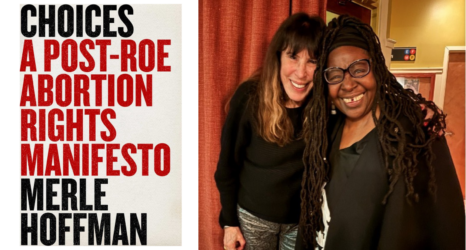Fourteen years. That’s how long it took me to admit to myself and others that I had survived a physically violent relationship.
For over a decade, I didn’t identify as a victim of assault because I loved my assailant and thought that he loved me. In my mind, I held an image of what a “real” battered woman looked like—black eye, split lip, broken nose. I never looked that bad. I only had to visit an emergency room once. My bruises were on parts of my body that never showed. Besides, he was going to stop hitting me one day. He promised.
I shoved the ugly and dangerous side of my love affair to the very back of my unconsciousness—because for me, true love meant having the strength to surpass any and all temporary trauma.
Thirteen years. That’s how long our relationship lasted. Three years together followed by ten years of pretending we were really good friends. After our official break up (he dumped me for someone else), he would show up or call me a few times a year for a 48-hour rekindle of our romance. He no longer hit me during those ten years. I held that as proof that we were on the road to a reconciliation. It also helped me to deny the three year period where he beat me up. I imagined we were working hard to build back trust between us because our mutual love for each other burned like a smoldering ember.
Fourteen years. That is the amount of time it took for me to decide to become involved in the movement to end violence against women. I still have no idea why one day, out of the blue, I picked up the phone and called the local organization in my city that provided a hotline for battered women and victims of rape and offered to volunteer for them. At the very first training session the image of what I thought a real battered woman looked like was replaced by my own reflection. When that happened, all the emotions of my horrible experience gushed out of me: shame, regret, confusion, sorrow and most of all rage.
Fourteen years. That’s the number of years it took for me to identify my former boyfriend as my assailant. When I incorporated the truth of my past experience into my present life, I knew I would never see him again. Only then was I able to talk about what had happened to me. I volunteered for the rape and battery hotline, went to support groups and shared my story. I became a victim advocate in the court system. I got a part time job at a battered women’s shelter and worked for a local domestic violence coalition. Eventually, I became a public speaker; an expert on was it was like to be trapped in a cycle of violence.
Thirty-five years. That’s how long it took for me to say his name in public. For 35 years I was fearful that he might find out I was talking about what he did to me and carry out the threat he used to scream in my ear: “I am going to kill you.”
For 35 years I believed I was weak. “If my boyfriend laid one hand on me,” I heard people say, “I would leave and never go back.” I tried to leave quite a few times. I always went back. I must have allowed myself to be abused. How stupid was I?
My abuser was successful and rich. As the years ticked by he became even more so, while I seemed to only become increasingly unstable, emotional and depressed. He got famous while I carried around an eternal sense of doom. I would spend years and years trying to reverse the effects his physical violence had on me: the sense of dread that followed me around everywhere and the belief that nothing I did would ever amount to anything.
If I told the whole story of my past I risked losing my job and the small career I had established for myself. I knew that letting the world hear my story meant I would be accused of lying and making it all up for attention and fame.
Why are women who are victims of abuse first suspected of lying about it if any amount of time has gone by between being assaulted and sharing it? Skeptical fingers point out the years between the action and the telling of it as proof that the story has been fabricated. The story fades into the background as victims are first asked why they bring up their painful past now.
I know why: Disclosing the facts of one’s life is a process.
If you think about it, it seems quite normal for someone to wait before revealing the details of their abusive pasts openly. Time heals wounds and as the wounds heal the penchant for sharing how they got there grows stronger.
Thirty-five years. That is how long it took me to realize my narrative is a valid one, for me to be able to write and speak these words without qualification: I did not let my boyfriend beat me up. Never once did I consent to his, or any other man’s, verbal or physical abuse.
I believe no woman ever has “allowed” a man to grope, assault or abuse her. Not Samantha Geimer, not Nicole Brown Simpson, not Joan Tarshis, not Jessica Leeds. Not any woman.
Women who have experienced violence tell the truth. Survivors do not lie. The only thing we are guilty of is taking the time to realize our abusers are not the leading characters in the story of our lives.
I am telling my story now, 35 later, because that is how long it took me to realize my story is about me.
I speak up today because I can.





